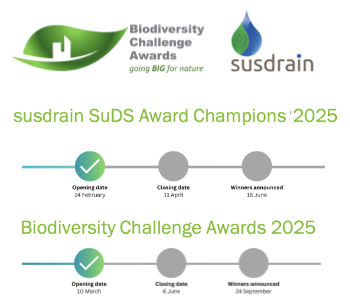Consultancy vs contingent labour
The Consultancy playbook, Government guidance on how to commission and engage with consultants more effectively, achieving better outcomes, better value for money and improved civil service capability through the transfer of knowledge and skills was published in May 2021. It provides guidance on how central departments can maximise value for money when sourcing consultancy services.
According to the playbook, “There are two main types of external temporary resource: consultancy and contingent labour (also known as temporary staff, interims or contractors). It is essential that the business unit chooses the option that balances high quality delivery with effective budget management."
The following checklist from the playbook provides an overview of typical consultancy services compared to that of contingent labour.
Typical characteristics of a consultancy:
- Advice (often strategic) is provided outside the business-as-usual environment.
- Skills/expertise are not available in-house.
- Access to data and information are not available in-house.
- Engagements are time-limited.
- Specific deliverables/outcomes are defined.
- The supplier has responsibility to meet those deliverables or outcomes.
Typical characteristics of contingent labour:
- Operational expertise is not available in-house.
- The role being filled exists within the organisation.
- Specific, named individuals are performing a role or function rather than delivering specific outcomes.
- The client retains management responsibility for the day-to-day performance of individuals and is responsible for defining the role or tasks they will perform.
For more information see: The Consultancy Playbook.
[edit] Related articles on Designing Buildings Wiki
- Consultancy.
- Consultancy playbook.
- Construction contractor.
- How contractors can reduce risk with the use of off-site construction.
- Outsourcing playbook.
- Skills shortage.
[edit] External resources
- Gov.uk, The Consultancy Playbook.
Featured articles and news
Peter Barber’s work revives forgotten building types.
Insights of how to attract more young people to construction
Results from CIOB survey of 16-24 year olds and parents.
Focussing on the practical implementation of electrification.
Sustainable Urban Drainage and Biodiversity
Awards for champions of these interconnected fields now open.
Microcosm of biodiversity in balconies and containers
Minor design adaptations for considerable biodiversity benefit.
CIOB student competitive construction challenge Ireland
Inspiring a new wave of Irish construction professionals.
Challenges of the net zero transition in Scotland
Skills shortage and ageing workforce hampering Scottish transition to net zero.
Private rental sector, living standards and fuel poverty
Report from the NRH in partnership with Impact on Urban Health.
.Cold chain condensing units market update
Tracking the evolution of commercial refrigeration unit markets.
Attending a conservation training course, personal account
The benefits of further learning for professsionals.
Restoring Alexander Pope's grotto
The only surviving part of his villa in Twickenham.
International Women's Day 8 March, 2025
Accelerating Action for For ALL Women and Girls: Rights. Equality. Empowerment.
Lack of construction careers advice threatens housing targets
CIOB warning on Government plans to accelerate housebuilding and development.
Shelter from the storm in Ukraine
Ukraine’s architects paving the path to recovery.
BSRIA market intelligence division key appointment
Lisa Wiltshire to lead rapidly growing Market Intelligence division.
A blueprint for construction’s sustainability efforts
Practical steps to achieve the United Nations Sustainable Development Goals.
Timber in Construction Roadmap
Ambitious plans from the Government to increase the use of timber in construction.
























Comments
"Consultancy" and "contingent labor" are terms used in business and human resources to refer to different types of arrangements for bringing external expertise or resources into an organization. These arrangements have distinct characteristics and purposes. Let's explore each one:
A consultancy refers to the provision of expert advice, guidance, and solutions to an organization or individual by an external consulting firm or individual consultant. Consultants are usually specialists in a particular field and are hired to provide insights, strategies, and recommendations to help the client address specific challenges, improve processes, or achieve specific goals. Here are some key features of consultancy:
- **Expertise:** Consultants bring specialized knowledge and expertise to address specific problems or opportunities.
- **Advisory Role:** Consultants provide advice, recommendations, and strategies to guide decision-making.
- **Project-Based:** Consultancy engagements are often project-based and have a specific scope and duration.
- **Problem Solving:** Consultants focus on identifying and solving specific issues or challenges.
- **Objective Perspective:** Consultants offer an unbiased, external perspective on the organization's operations.
- **Customized Solutions:** Consultants tailor their advice and solutions to the client's unique needs.
- **Reports and Deliverables:** Consultancy engagements typically result in reports, analyses, and actionable plans.
- **Client Collaboration:** Consultants work closely with the client's team to implement recommendations.
Contingent labor refers to the use of temporary or flexible workers to fulfill specific roles within an organization. Contingent workers are not permanent employees but are hired on a temporary basis to address short-term staffing needs, workload fluctuations, or special projects. Contingent labor can include temporary employees, contractors, freelancers, and gig workers. Here are some key features of contingent labor:
- **Flexibility:** Contingent labor provides flexibility in staffing, allowing organizations to quickly adapt to changing demands.
- **Short-Term Assignments:** Contingent workers are often hired for short-term assignments or specific projects.
- **Specific Skills:** Organizations hire contingent workers to fill specific roles that require specialized skills.
- **Reduced Overhead:** Contingent workers can help organizations manage costs by avoiding the expenses associated with full-time employees.
- **Limited Benefits:** Contingent workers may not receive the same benefits as permanent employees.
- **Diverse Talent Pool:** Contingent labor allows organizations to access a diverse pool of talent with various skills and expertise.
- **Contractual Agreements:** Contingent workers often have contractual agreements outlining the terms of their engagement.
In summary, consultancy involves hiring external experts to provide advice and solutions, while contingent labor involves hiring temporary workers to fulfill specific roles. Both consultancy and contingent labor arrangements can offer organizations valuable expertise and resources based on their specific needs and goals. The choice between the two depends on the nature of the project or challenge at hand and the organization's staffing and resource requirements.